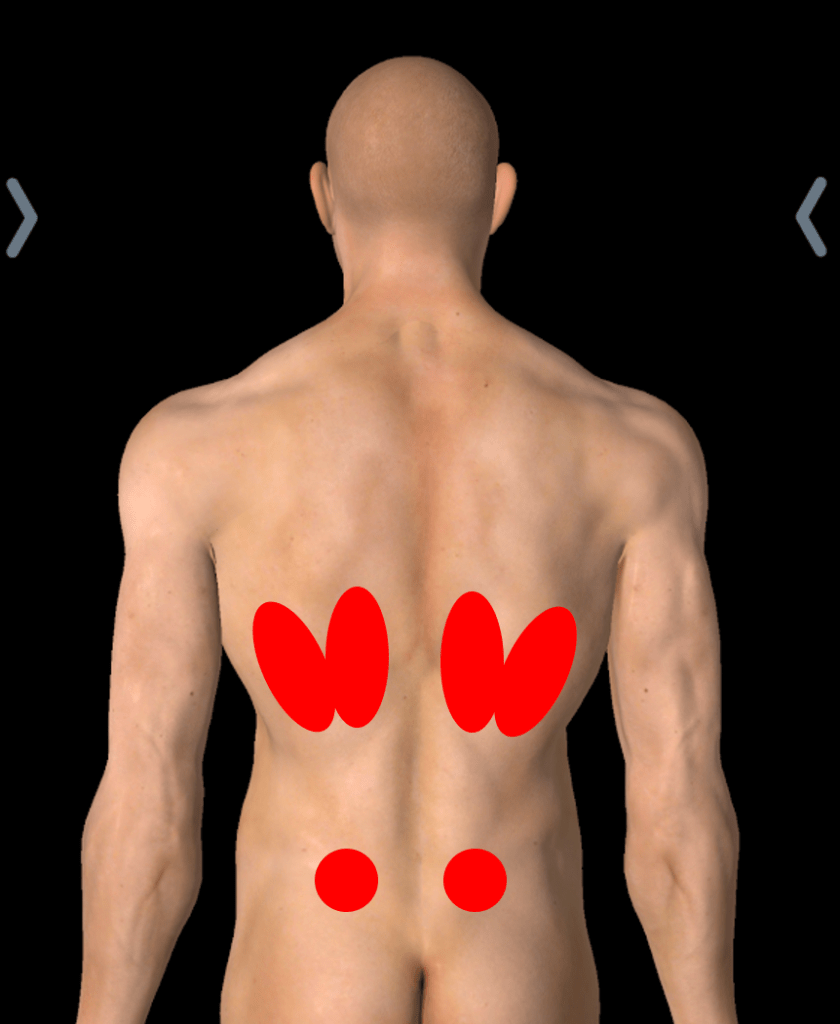Why Does the Back of My Ribs Ache? A Comprehensive Guide to Causes, Diagnosis, and Relief

Key points
- Sudden twisting motions
- Heavy lifting
- Intense exercise
- Forceful or persistent coughing
An ache in the back of the ribs is a confusing and often alarming symptom. The pain can range from a dull, persistent throb to a sharp, stabbing sensation that catches your breath. Because this area is a complex intersection of bones, muscles, nerves, and is in close proximity to vital organs, pinpointing the cause can be challenging.
This comprehensive guide will help you understand the potential sources of your pain, from common musculoskeletal strains to less common but more serious internal conditions. We will cover how this pain is diagnosed, when you must seek medical attention, and what you can do to find relief.
Understanding the Anatomy: Where Your Ribs and Back Connect
Your rib cage is comprised of 12 pairs of ribs. In the back, each rib connects to one of the 12 vertebrae of your thoracic spine (mid-back). These connections, called the costovertebral and costotransverse joints, along with the surrounding muscles and ligaments, allow your rib cage to expand and contract as you breathe. As the Centeno-Schultz Clinic explains, this intricate relationship means that an issue in your mid-back can easily cause pain felt in your ribs, and vice versa.
 Source: Regenexx
Source: Regenexx
Common Musculoskeletal Causes of Back Rib Ache
Most often, an ache in the back of the ribs originates from the musculoskeletal system. This type of pain is typically mechanical, meaning it worsens with certain movements or positions.
Muscle Strains and Sprains
The intercostal muscles are small muscles located between each rib. They can be easily strained or "pulled" by:
- Sudden twisting motions
- Heavy lifting
- Intense exercise
- Forceful or persistent coughing
An intercostal muscle strain can cause sharp, localized pain, stiffness, and muscle spasms in the upper back and ribs, as noted by Medical News Today.
Rib Injuries: Bruises and Fractures
A direct blow to the back or chest from a fall, car accident, or contact sport can bruise or fracture a rib. According to Verywell Health, a classic symptom of a fractured rib is sharp pain that intensifies when you take a deep breath, cough, laugh, or sneeze.
Costochondritis and Joint Inflammation
Costochondritis is the inflammation of the cartilage that connects your ribs to the breastbone (sternum). While the pain is most often felt in the front of the chest, it can radiate to the back. The pain is often described as sharp and may worsen with deep breaths or movement.
Thoracic Spine and Disc Issues
Problems within your mid-back can directly lead to back rib pain.
- Herniated Disc: A disc in the thoracic spine can bulge and press on a nerve, causing pain that radiates along the nerve's path around the rib cage.
- Spinal Arthritis (Osteoarthritis): The breakdown of cartilage in the facet joints of the spine can cause pain, stiffness, and limited movement, as described by New Jersey Spine Specialists.
Posture and Lifestyle Factors
Your daily habits are a significant contributor to back rib ache. Poor posture, especially from prolonged sitting at a computer or looking down at a phone, puts continuous strain on your thoracic spine and the joints where the ribs attach. This can lead to chronic muscle tension and joint irritation, causing a persistent, dull ache.
When Back Rib Ache Signals an Internal Issue (Visceral Referred Pain)
Sometimes, pain felt in the back is "referred" from an internal organ. The brain misinterprets the pain signal's origin because nerves from the organ and the back area share common pathways. This visceral pain is often unrelated to movement and may be accompanied by other systemic symptoms.
Lung-Related Conditions
- Pleurisy: Inflammation of the pleura, the lining around the lungs, causes sharp chest and back pain that worsens with breathing.
- Pulmonary Embolism (PE): This is a medical emergency where a blood clot (usually from the leg) travels to the lungs. It causes sudden, sharp chest or back pain, severe shortness of breath, a rapid heart rate, and may involve coughing up blood.
- Lung Cancer: In some cases, lung cancer can cause persistent pain in the chest, shoulders, or back.
Kidney and Gallbladder Problems
- Kidneys: Located just below the rib cage on either side of the spine, the kidneys can cause significant back and flank pain if you have kidney stones or an infection.
- Gallbladder: Gallstones or gallbladder inflammation can cause intense pain in the upper right abdomen that often radiates to the back and between the shoulder blades, particularly after eating a fatty meal.
Other Conditions
- Shingles (Herpes Zoster): This viral infection causes a painful, blistering rash that often wraps around one side of your torso along a nerve path, which can feel like severe back rib pain even before the rash appears.
- Fibromyalgia: A chronic condition characterized by widespread musculoskeletal pain, fatigue, and tender points, which can include the rib cage.
- Osteoporosis: This condition weakens bones, making ribs more susceptible to fractures from minor events like a strong cough.
When to Seek Medical Attention for Back Rib Pain
While many cases of back rib ache resolve with self-care, it's crucial to recognize the signs that warrant a professional evaluation.
See a Doctor If...
- The pain is severe, doesn't improve after a few days of home care, or is getting worse.
- The pain resulted from a significant trauma or fall.
- The pain is limiting your ability to take a deep breath.
- You have other symptoms like a fever or unexplained weight loss.
Go to the Emergency Room Immediately If... (Red Flags)
According to multiple sources including the Physiopedia list of red flags, you should seek immediate emergency care if your back rib ache is accompanied by any of the following:
- Difficulty breathing or severe shortness of breath
- Chest pain, pressure, or tightness
- Coughing up blood
- High fever and chills
- Pain radiating to your arm or jaw
- Dizziness, lightheadedness, or rapid heart rate
- Yellowing of the skin or eyes (jaundice)
- New onset of pain if you are under 20 or over 50, or have a history of cancer or drug abuse.
How Back of Ribs Ache is Diagnosed
To determine the cause of your pain, a doctor will follow a structured diagnostic pathway.
- Medical History and Physical Exam: Your doctor will ask detailed questions about your pain (onset, location, character) and any recent injuries or activities. They will perform a physical exam, pressing on your back and ribs to check for tenderness and assessing your range of motion.
- Imaging and Tests: Depending on the initial findings, one or more tests may be ordered:
- X-ray: To check for rib fractures or obvious issues with the spine.
- CT Scan or MRI: To get detailed images of bones (CT) or soft tissues like muscles, ligaments, and discs (MRI).
- Ultrasound: To evaluate muscle, tendon, and ligament injuries.
- Blood Tests: To look for signs of infection, inflammation, or issues with internal organs.
Finding Relief: Treatment and Home Care Strategies
Treatment depends entirely on the diagnosis. A musculoskeletal issue will be managed very differently than a kidney stone.
At-Home Management for Minor Aches
For pain you suspect is from a minor muscle strain or poor posture:
- Rest: Avoid activities that aggravate the pain for a few days.
- Ice: Apply an ice pack wrapped in a towel for 15-20 minutes several times a day for the first 48 hours to reduce inflammation.
- Pain Relievers: Over-the-counter nonsteroidal anti-inflammatory drugs (NSAIDs) like ibuprofen (Advil, Motrin) or naproxen (Aleve) can help.
- Gentle Movement: After the initial acute phase, gentle stretching can prevent stiffness. Focus on posture correction exercises.
- Avoid Compression: Do not wrap your chest tightly with bandages. The NHS advises this can restrict deep breathing and increase the risk of pneumonia.
Medical Treatments
If home care isn't enough, your doctor may recommend:
- Physical Therapy: To strengthen core and back muscles, improve posture, and increase flexibility.
- Prescription Medications: Stronger pain relievers or muscle relaxants may be prescribed.
- Injections: Corticosteroid injections can reduce inflammation in a specific joint. Regenerative options like platelet-rich plasma (PRP) are also used for some injuries.
- Treating the Underlying Cause: This could involve antibiotics for an infection, blood thinners for a pulmonary embolism, or procedures to address gallstones or kidney stones.
References
- Medical News Today - Back rib pain: Causes and treatment
- Centeno-Schultz Clinic - Back Pain in Ribs
- New Jersey Spine Specialists - NJSS Treats Patients For Various Degrees Of Back Rib Pain
- Verywell Health - How Do You Know if You Have a Broken Rib?
- Physiopedia - Thoracic Back Pain Red Flags
- NHS - Broken or bruised ribs

About the author
Michael O'Connell, DO, is a board-certified emergency medicine physician working as an attending physician at a busy Level I Trauma Center in Philadelphia, Pennsylvania. He also serves as a clinical instructor for medical residents and is active in wilderness medicine.